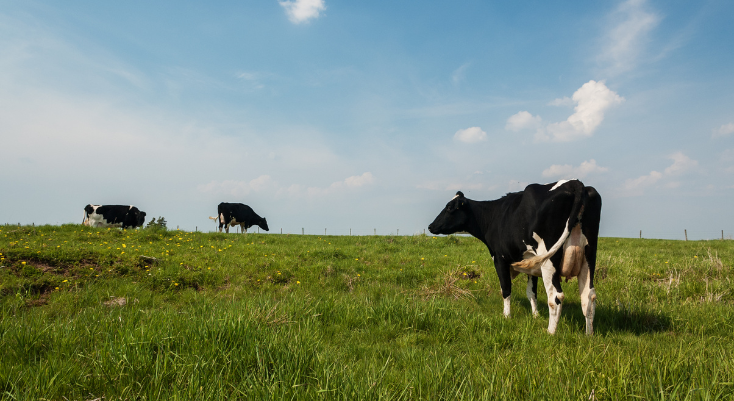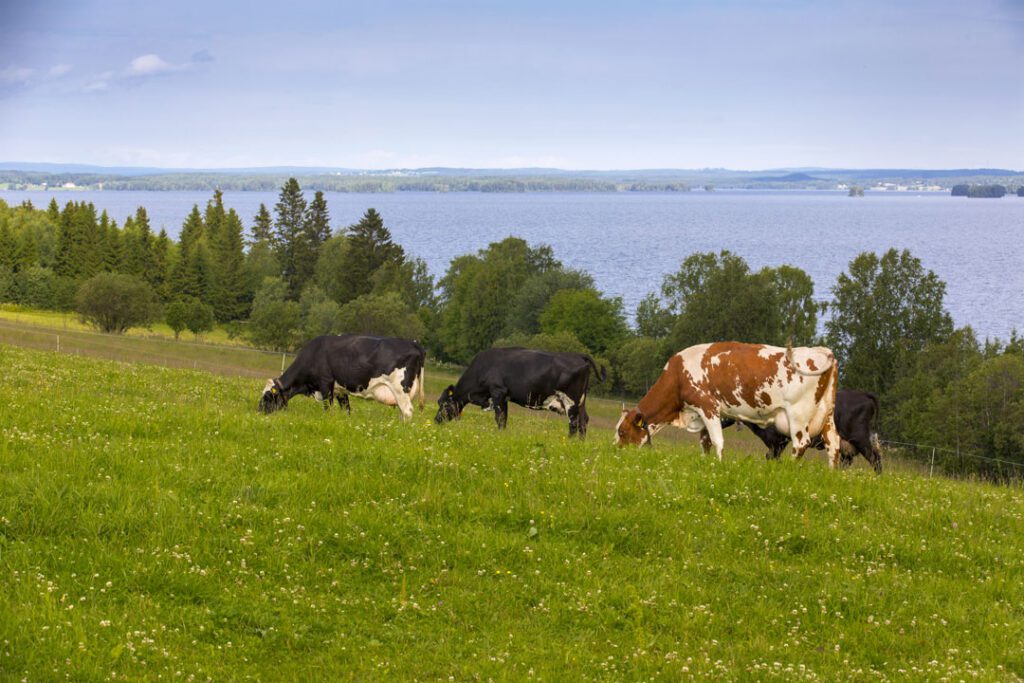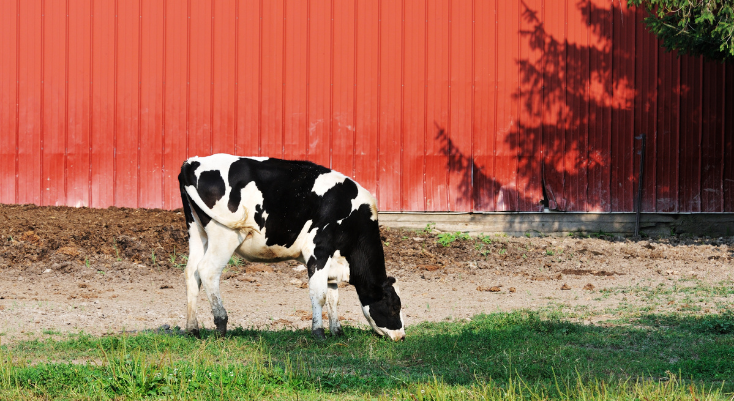What is the relevance of the revised IDF global Carbon Footprint methodology for the dairy sector?
Aligning how to quantify greenhouse gas emissions and potential removals for dairy is critical for the sector, to build credibility and avoid confusion, both inside as well as outside the sector. Thus, the IDF Carbon Footprint standard for the dairy sector is an important piece of work for the sector’s journey towards net zero. The goal is to make carbon footprint numbers more comparable and to allow customers and consumers to choose low-carbon products, and this update is one step on the way to that. The sector acknowledges that making fair comparisons of carbon footprint results between different studies is not yet possible, but that should not stop us from continuing the dialogue and alignment on methodology and getting more transparency on reporting of both methods as well as results. A robust methodology is also important to show progress in carbon footprint performance over time and to understand which mitigation options work and which do not, to achieve our climate targets. To have a life cycle perspective (as opposed to national boundaries) and follow the full value chain, from cow to consumer (or cradle to grave), is crucial to understand the full impact of the product and ensure global net reduction, and not shift of burden from one country to another. Also, the IDF LCA action team consists of more than 50 experts from 17 different geographies, which bring very different perspectives on dairy and dairy farming, resulting in valuable discussions and exchange of knowledge on dairy and greenhouse gas accounting from very different systems and local perspectives.
What are the necessary steps for it to become the LCA Global Standard for the whole value chain?
The IDF Carbon Footprint standard for the dairy sector is already used by many and is also incorporated in several carbon footprint assessment tools. During the last years of work within the IDF LCA action team, there have been discussions on differences between interpretation and implementation of the guide, and there has been identified a need for further clarification and alignment. Thus, the next step that the IDF LCA action team will work on is validation against the IDF carbon footprint methodology. This will significantly strengthen the harmonization of carbon footprint calculations. It should, however, be stressed that harmonization should not compromise the accuracy of a carbon footprint, hence, the aim should always be to use as good data as possible and emission factors of a higher tier would always be preferable. The guide is designed for everyone and is flexible in the sense that it allows for anyone to conduct a carbon footprint study, and guidance is also given on e.g. feed production and potential data sources. It should be acknowledged, though, that when databases on feed and other inputs are not available in some regions, the time and resources required are larger than for regions where more data is readily available.
How does the new methodology assist the dairy industry in its efforts to reduce GHG emissions?
They say “you can’t manage what you don’t measure”, and thus having guidelines and methodology in place on how to calculate and quantify the greenhouse gas emissions and potential removals are critical to also identify measures to reduce the emissions. What mitigation options are most feasible depending on the production system and the geographical location. The updated version of the IDF guide includes a list of mitigation options to give a clear overview of the different possibilities that exist to reduce GHG emissions in the dairy chain. Another addition to the updated version of the IDF guide is that it addresses the whole value chain, which also enables looking at mitigation beyond the farm and factory gate, all the way to the consumer.
What is its contribution to the Pathways to Dairy Net Zero?
The IDF carbon footprint standard sets the rules for how to measure progress in the pathways to net zero initiative. It tells how to do the accounting. In pathways to net zero, the aim is to measure progress and make plans on how to reduce the carbon footprint and the total GHG emissions from the dairy sector globally. To do so it is essential to determine what is exactly the methodology to calculate the global carbon footprint. Which emissions are in, and which emissions are out of scope. And the IDF carbon footprint standards give exactly that clarity.
Can you briefly explain how the Action Team developed this new standard?
The IDF LCA action team, which started in 2009 and has been growing over the years, is now consisting of more than 50 experts from 17 countries. The update started with a discussion on determining the aim or the purpose of this guide. A review was then conducted, of the different existing standards and how they aligned with the former version of the IDF carbon footprint guideline and where there was no alignment or unclarity. Based on this information we determined which parts of the guide we would like to improve. We created 3 workstreams and we took the time to discuss and find the scientific evidence to make changes. When we had reached a consensus, we started drafting the guideline. Finally, we went through several review rounds.
What are its most significant updates?
There have been several updates in the guide, but no fundamental ones that change the approach taken in earlier versions. The most important updates are that we have highlighted the importance of defining the functional unit, that you must consider the nutritional value when comparing dairy with non-dairy or dairy with dairy products, and we have added guidance on that. We have extended the scope of the guide from cradle to factory gate to cradle to grave (end of life). We have improved the guidance around system boundary setting and allocation and updated the allocation equation of milk and meat. We have also added guidance and clearance regarding renewable energy generation on farms and use of that in the factory, to avoid double counting. We have added more guidance on how to incorporate land use change emissions and carbon sequestration in a carbon footprint. We have also added an extensive overview regarding the alignment and use of other standards in combination with this guide. We have added information in the annexe about mitigation options to reduce GHG emissions from dairy production. We have also added some guidance about how to extend your carbon footprint to an environmental footprint, which includes more environmental categories than just contributing to global warming. Finally, we have also slightly updated the structure of the guideline to better align with the ISO way of working.
How does it help to meet other UN SDGs?
The carbon footprint standard of course helps to achieve the SDG 13 climate action, by enabling measuring progress on that. But at the same time, it helps to achieve SDG 2: Zero Hunger by making sure that we can produce nutritious dairy products in combination with a small environmental impact. Doing so enhances SDG 12’s responsible consumption and production because it helps companies to measure and be accountable for their impact on the environment. By producing dairy with a low environmental impact SDG 15 life on land will also be enhanced. A low carbon footprint product is often an efficiently produced product, using little (natural) resources. Therefore, it assures that there will be enough space left for nature. But also, for example, to reduce your carbon footprint, you should avoid deforestation and increase carbon sequestration and that results in better life on land, better biodiversity of forests and agricultural soils and eventually biodiversity and nature quality.
What is its relevance vis a vis COP27?
COP27 primarily focuses on targets of individual countries and commitments to reduce GHG emissions at a national level. This approach has its limitations. The carbon footprint approach looks beyond national borders. It looks at the full dairy value chain, which is often located in different countries. The IDF carbon footprint standard explains how to calculate the contribution to global warming of dairy products from cradle to grave. To have a life cycle focus is very important, to ensure net improvements and no shift of burden across country borders. For that purpose, the carbon footprint methodology is very useful. It provides us with an overview of greenhouse gas emissions for the entire value chain.
In what major ways do you think COP27 is important for climate action?
COP27 is the place where commitments are made at the highest possible level. Where we all sit down together on how to tackle this climate crisis we are facing. But these commitments must be translated into practical actions by governments, companies, farmers, consumers, and citizens. The IDF carbon footprint standard can translate these high-level commitments into a monitoring system to practically measure progress and then decide how to act.











